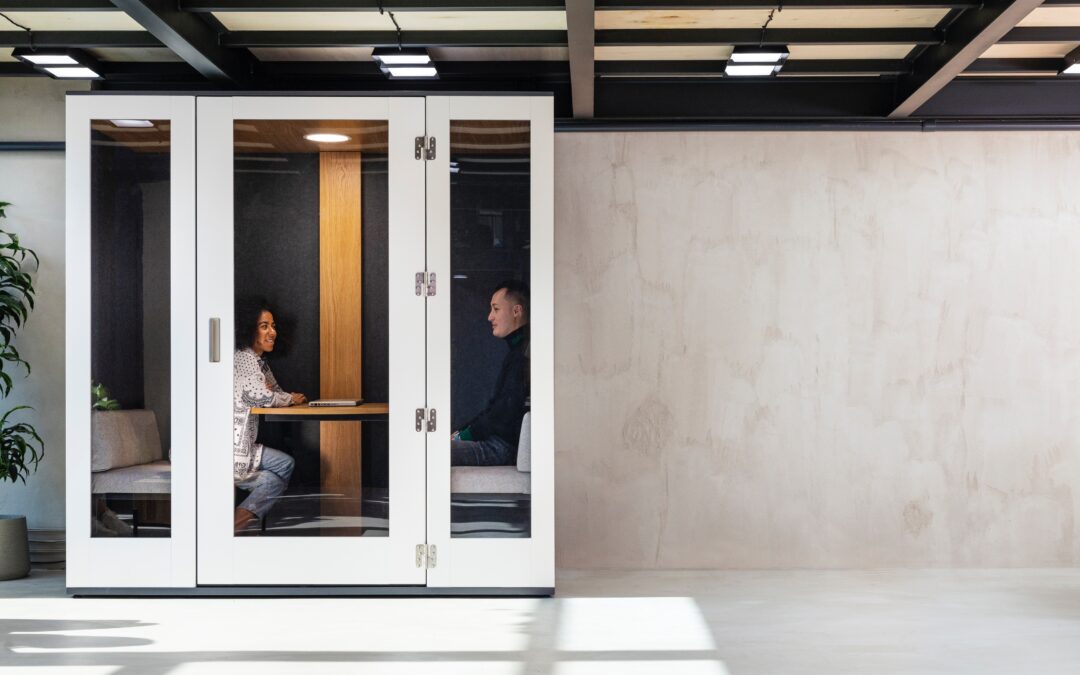Collaborative workspaces are open areas or organizational systems that an office uses to bring its employees together and boost the possibility of cooperative working environments. Considering the huge presence of collaborative work across all industries, facilitating these spaces should be a top priority for all businesses.
However, there isn’t just one type of collaborative workspace. Over the years, as the modern workforce has evolved, the spaces that people turn to have shifted and changed. We’ve now almost fully moved away from the dominance of cubicle offices, with less than 30% of office spaces in the US resembling this structure.
In younger businesses, this percentage is even smaller, with new-wave businesses that prioritize worker flexibility and employee wellbeing focusing on creating hybrid, pleasant workspaces for their employees to work in. In this article, we’ll explore all of the types of collaborative workspaces that office spaces could use, outlining the benefits of each.
Let’s dive right in.
Open office layouts: enhanced collaboration and communication
Open office floor plans are amongst the most popular work organizational structures of the decade. Industry giants like Apple, Microsoft, and Amazon offices have all started to create more flexible working spaces for their employees. This trope is especially prevalent in the tech sphere, where office tours demonstrate large open spaces with hot desks and amenities all over.
Originally, open offices were used by start-ups to maximize the number of employees that could work in a space while also boosting collaboration. By splitting a floor into several different open areas, with some for meetings, some for teamwork, some for focused work, and some for complete privacy, you can give your employees complete control over how they get their work done.
Alongside facilitating collaboration and communication, the ability for employees to break off into quieter spaces is a huge benefit. However, this is only possible with great management and zoning. If a workspace is poorly zoned, then noise from collaborative work could bleed out into other parts of the office.
Some employees find that open offices create much more noise than other collaborative workplace structures. For example, those in open offices actually have much higher rates of distraction than other structures, which can impede employee progress. While effective for collaboration, these spaces are notorious for being rowdy and harder to control.
Collaborative meeting rooms: teamwork and idea exchange
Collaborative office meeting rooms can take two main forms. The first is the traditional structure, which is where a business will zone off a specific room in the office for private meetings. Employees can book into this meeting room when they have something on their agenda, ensuring access to this space.
Another form of collaborative meeting room is in office meeting pods. These pods are private spaces with a door that you can install in any location in the office. They are built for between two to four people, giving everyone space to get their work done in a collaborative environment.
Not only are office meeting pods much more efficient than office meeting spaces as they take up less of the floor plan, but they also provide a soundproof area. These sound-resistant spaces will stop noise from a meeting from leaking out into quiet office areas and will also keep meetings private for those inside the space. These are rapidly becoming a popular choice, with major brands like Amazon, Monzo, DHL, Google, and more all opting for collaborative meeting pods.
Hybrid Work Spaces: Pushing for a flexible workplace culture
Another popular trend that has spiked in the past few years is embracing hybrid working in an office. Nowadays, with almost 30% of the workforce following a hybrid model, it’s not uncommon for employees to only visit the office a few times a week. Some businesses will schedule this based on the team, with everyone from certain departments being in the office on a certain day. Others will leave it up to the individual, giving everyone the flexibility they need to perfect their work-life balance.
The hybrid model allows your office to cut back on its space and invest in high-quality furniture, amenities, and spaces for your employees. As only a select handful of employees will be in each day, you can downsize your office and look into alternative spaces. For many businesses, having an office that employees look forward to coming into will help them keep their employees satisfied on the days they have to come to work.
This flexibility will give you the ability to change your workspace to fit your current work balance, whether it involves hot desks, collaborative meeting rooms, or something else entirely.
Which type of collaborative workspace works best for your business
The best collaborative workspace is the one that aligns with your company’s goal at that very moment. If you’re looking for a more flexible working situation for your employees, then having open office hot desks could be a strong solution.
Alternatively, if you’re looking to increase the privacy that your workers have in the office, then moving to install collaborative work pods would be a better call. Start by assessing where your business is currently at, poll employees if needed, and then work from there!
Final Thoughts
Collaborative workspaces come in all shapes and sizes. As time goes on and the world of work continually innovates, we see certain office designs come in and out of fashion. While enclosed cubicle offices were once popular, open offices are now the leading office format. Yet, other collaborative spaces like office meeting pods are quickly becoming a strong alternative option.
Depending on the current structure of your business and what you’re looking to obtain from your office, the right solution for you will vary. If you want to learn more about enriching your space with office pods, then reach out to the team at MEAVO. With a range of meeting pods and collaborative spaces, we’ll be able to find the perfect complement to your new office space.


